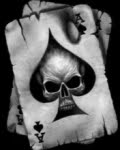1. Assholes are assholes and good people are good people; and only on the very rare occasion does one become the other.
2. Your heart is right 50 to 75 percent of the time. Your gut is right 100 percent of the time.
3. Everything you own should be something you either love dearly or use yearly.
4. Karma is a bitch when you are. No exceptions.
5. Everyone is in your life for a reason, a season or a lifetime and 95 percent of people fall into the first two categories.
6. You will know true love on the outside, when you know true love on the inside.
7. You will never regret working less and traveling more. You will likely regret working more and traveling less.
8. If it doesn’t feel right, it isn’t right.
9. The universe gives you three choices:
Change course when it taps you on the shoulder to tell you to go the other way;
Change course when it is tired of tapping you on the shoulder, grabs you by both shoulders and shakes you to tell you to go the other way;
Change course when it is tired of shaking you, pulls out the baseball bat and starts pummeling you, leaving you with no choice but to go the other way.
10. What you know will never be as important as who you know.
11. ‘Someday’ is today.
12. Vote. No exceptions. Ever.
14. When you say you, “don’t know what to do,” the vast majority of time you actually do know what to do – you just don’t like the answer.
15. Silence is violence, yet words can kill. Be vigilant in both regards.
16. Neither luck nor money have very much to do with your ability to travel.
17. One day will be the last day for you and everyone you love. That day has snuck up on a lot of people. Act accordingly.
18. When you don’t know what to say, you must say something. Even if it is, “I don’t know to say.”
19. Any email in your outbox that could alter the course of your life by arriving in someone else’s inbox needs to sit in ‘drafts’ for five days before hitting send. No exceptions.
20. You do not own belongings which you purchased with a credit card; they own you.
21. Create your life story the way they write movies. Decide how you would like it to end and then create every scene that would lead up to it.
22. Revere doctors who practice health. Run from doctors who practice medicine.
23. Everyone has a story that would blow your f’n mind. No exceptions.
24. Momentum is a universal force you can control. Every day you choose whether it will pull you further backwards or push your farther forwards.
25. You can’t out crazy, crazy, but hopefully you can out run it.
